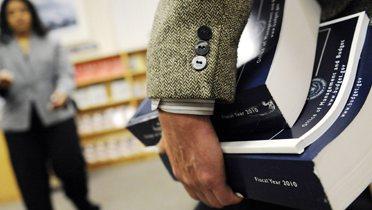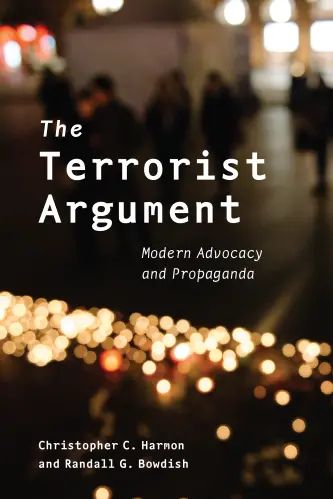ABSTRACT
We provide new estimates of the federal budget outlook over 10-year and long-term horizons under three sets of assumptions: the Congressional Budget Office baseline, which assumes no changes in current law; an extended policy scenario, in which it is assumed that future Congresses act more or less like previous Congresses in extending expiring provisions; and the Administration budget. Under either the extended policy or the Obama policy scenarios, deficits are high and rising over the second half of the decade, despite the assumption that the economy is in full employment. In 2020, the deficit is projected to be between 5 and 7 percent of GDP and the debt/GDP ratio is projected to exceed 90 percent. These figures only deteriorate with the passage of time. The long-term fiscal gap – the size of the immediate and permanent change in spending or taxes needed to keep the long-term debt/GDP ratio at its current level – is in the range of 6-9 percent of GDP. Further health care reform can be an important part of reducing the fiscal gap, but the problem is far too large to be solved by plausible reductions in health care spending alone. Postponing the onset of a fiscal package will make the problem even harder: even just a 5-year delay in implementation would raise the required fiscal adjustment by about 0.4 percent of GDP, or almost $60 billion per year.
I. Introduction
The United States faces the prospects of large federal fiscal deficits in the immediate future, the next 10 years, and the longer term. The short-term deficits – the result of the tax cuts and spending increases of the last decade, the “Great Recession,” and economic policy adjustments in the past year – are generally thought to be helping the economic recovery. In contrast, the medium-term deficits projected for the next 10 years and the long-term deficits projected beyond 2020 are a source of concern. Even if they do not lead immediately to a “crisis,” they will nevertheless create growing and serious burdens on the economy.
The unsustainability of federal fiscal policy has been discussed at the least since the 1980s. But the problem has increased in importance and urgency in recent years, for several reasons. First, the medium-term projections have deteriorated significantly. Second, the issues driving the long-term projections – in particular, the retirement of the baby boom and the aging of the population and the resulting pressure on Medicare and to some extent Social Security – which were several decades away in the 1980s, are now imminent. Third, there are increasing questions about the rest of the world’s appetite for U.S. debt, as the U.S. has changed from a net creditor country in 1980 to a vast net borrower currently. Fourth, many countries around the world and many of the 50 states also face daunting fiscal prospects currently.
In light of these issues, this paper provides new projections of the federal budget over the medium and long terms. The analysis begins with the Congressional Budget Office (CBO) baseline budget projections. CBO (2010b) projects the 2010 deficit to be $1.4 trillion, about 9.4 percent of GDP. Other than 2009, this represents the largest deficit share of the economy since World War II. For 2011-2020, the CBO baseline (adjusted for the effects of recent health care legislation) projects a cumulative deficit of $5.8 trillion, with deficits declining sharply to 2.3 percent of GDP by 2014 and remaining below 3.0 percent of GDP through 2020. This would be a reassuring outcome, except that the CBO baseline is not intended to represent likely or probable outcomes. Rather, it reports the implications of the assumption, essentially, that Congress does nothing over the next 10 years. All expiring tax provisions are assumed to expire as scheduled, for example.
A more plausible way to project future outcomes may be to assume that future Congresses will act more or less like previous Congresses, for example in granting continuances to expiring tax provisions. To generate a better measure of where fiscal policy is headed, we alter the CBO baseline assumptions in ways that we believe are more representative of the continuation of current policies. Under this extended policy scenario, we estimate a ten-year deficit of $11.3 trillion, or 6.0 percent of GDP. As in CBO’s baseline, deficits decline in the near term, but only to 4.8 percent of GDP by 2014, and unlike in CBO’s baseline, deficits then rise substantially, to 6.8 percent of GDP by 2020.
A third way to project future outcomes is to examine the Administration’s budget proposals. These figures are not quite as bad as under extended policy, but are troubling nonetheless. The ten-year deficit under Obama policy is projected to be $9.0 trillion. The deficit declines to 4.0 percent of GDP by 2014. By 2020, although the economy is projected to have been at full employment for several years, the deficit rises to 5.5 percent of GDP. Spending rises to 24.7 percent of GDP (the highest since World War II, except for the current downturn), the debt-to-GDP ratio rises to 90 percent (the highest since 1947), and net interest payments rise to 4.0 percent of GDP (the highest share ever and larger than defense or non-defense discretionary spending).
All of these figures are poised to rise further after 2020, implying that the situation is unsustainable. The debt-to-GDP ratio will pass its 1946 high of 108.6 percent by 2033 under the CBO baseline, but much sooner – in 2023 and 2025, respectively – under extended policy or Obama policy. Under all three scenarios, however, the debt-to-GDP ratio would then continue to rise rapidly, contrary to its sharp decline in the years immediately after 1946.
To examine these issues more formally, we estimate a long-term fiscal gap – the immediate and permanent increase in taxes or reduction in spending that would keep the long-term debt-to-GDP ratio at its current level. Depending on the time frame employed, the long-term fiscal gap is about 5-6 percent of GDP under the assumptions in the CBO baseline, about 6-8 percent of GDP under the assumptions under Obama policy, and about 7-9 percent of GDP in the extended policy baseline.
Even very substantial and sustained reform of health care will slash only a small share of these estimated gaps. As a result, the budget outlook will create difficult trade-offs for policy makers and the American public.










